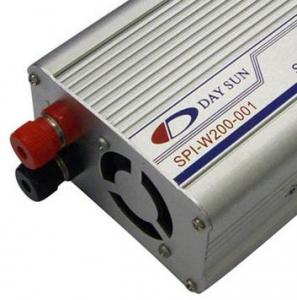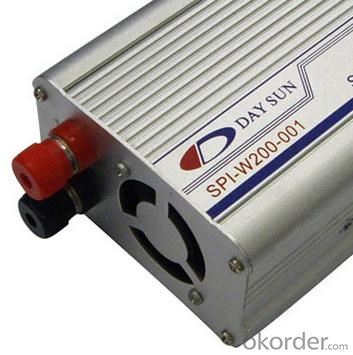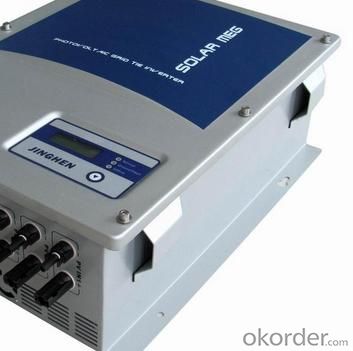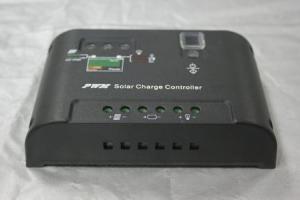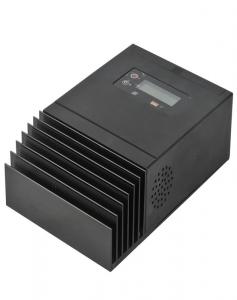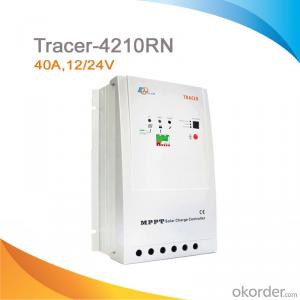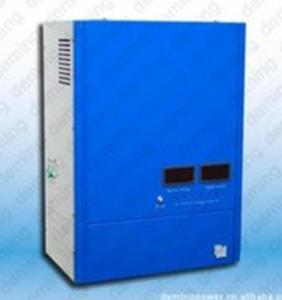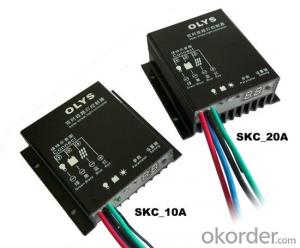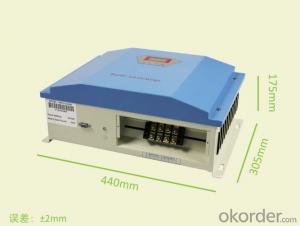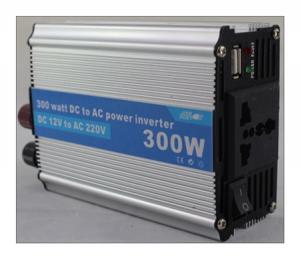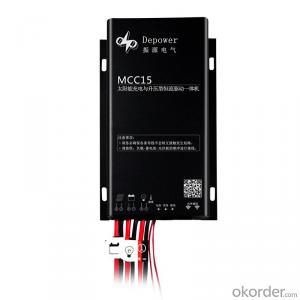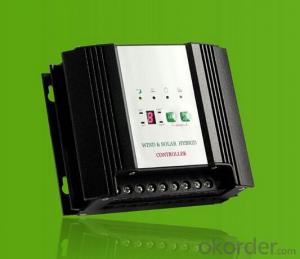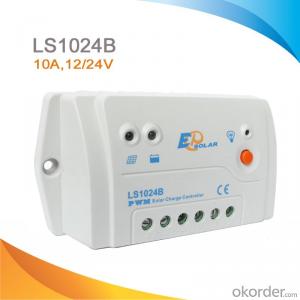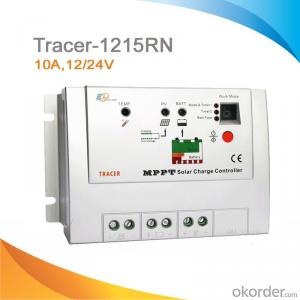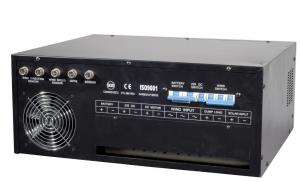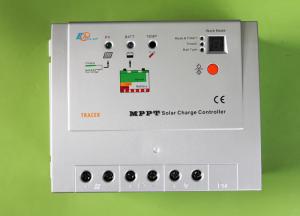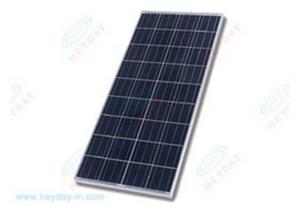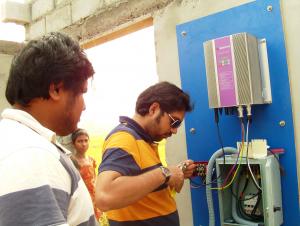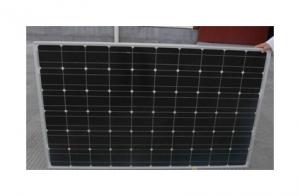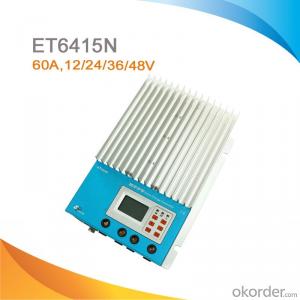Solar Controllers - High Quality 10A 12V Solar Charge Controller with Useful Discharge
- Loading Port:
- China main port
- Payment Terms:
- TT or LC
- Min Order Qty:
- 100 unit
- Supply Capability:
- 10000 unit/month
OKorder Service Pledge
OKorder Financial Service
You Might Also Like
1, Product desciption
Inverter circuits designed to produce a variable output voltage range are often used within motor speed controllers.
The DC power for the inverter section can be derived from a normal AC wall outlet or some other source. Control and feedback circuitry is used to adjust the final output of the inverter section which will ultimately determine the speed of the motor operating under its mechanical load.
Motor speed control needs are numerous and include things like: industrial motor driven equipment, electric vehicles, rail transport systems, and power tools. (See related: variable-frequency drive ) Switching states are developed for positive, negative and zero voltages as per the patterns given in the switching Table.
The generated gate pulses are given to each switch in accordance with the developed pattern and thus the output is obtained.
2, Features of the product
Inverters convert low frequency main AC power to higher frequency for use in induction heating.
To do this, AC power is first rectified to provide DC power. The inverter then changes the DC power to high frequency AC power. Due to the reduction in the number of DC Sources employed, the structure becomes more reliable and the output voltage has higher resolution due to an increase in the number of steps so that the reference sinusoidal voltage can be better achieved.
This configuration has recently become very popular in AC power supply and adjustable speed drive applications. This new inverter can avoid extra clamping diodes or voltage balancing capacitors. There are three kinds of level shifted modulation techniques, namely:
The first thing to figure out is the length of road in need of street lights.
This can be a small entrance road only a couple hundred of feet long to miles of streets through an area. Does the area currently have any type of lighting available.
What is the reason for needing street lights in this area
Is the electrical grid already nearby or would you need to call in the power company to bring in electrical lines.
If the electric needs to be brought to the area, how much is this going to cost? Depending on how far the grid electric is from the location of the needed lighting, this can be quite expensive.
How much lighting is needed on the street? Do the lights need to be dark sky compliant.
Do the street lights need to run from dusk to dawn or for only a specified number of hours at night.
Are the street lights able to dim in the middle of the night and still provide enough lighting.
These questions need to be answered before you can decide on how many lights you will need to complete the project.
3, Detailed Specification
ltem | Description |
Rating Voltage | 1000VDC |
Rating Current | 15A |
Protection Class | CLASSll |
Ambien e Range:t Temperatur | -40℃---85 |
Dust,water level | IP67 |
Sealing | Closed |
Cable Specification | 4mm2 |
Dimension | 104x95x19(mm) |
Certification | TUV/ |
Diode model | SB4040LDC |
Testing standard | BS EN50548;2011 |
Pollution levels | 2 |
Maximum working temperature | 110℃ |
Flame retardant grade | UL94 V-0 |
Bus width | MAX.6.0 mm |
Convergence with the connection | Clamping |
Connector | CABLE |
4, Product Image
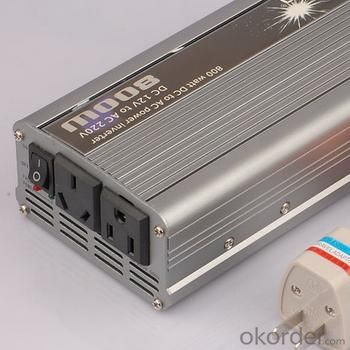
- Q: Can a solar controller be used with a wind turbine as a hybrid renewable energy system?
- Yes, a solar controller can be used with a wind turbine as a hybrid renewable energy system. The solar controller can regulate the charging and discharging of batteries in the system, which can be connected to both the solar panels and the wind turbine. This allows for efficient utilization of both solar and wind energy, maximizing the overall energy generation and storage capabilities of the hybrid system.
- Q: Are solar controllers necessary for small solar panel systems?
- Small solar panel systems require solar controllers. These controllers, also known as charge controllers or regulators, are vital components in any solar power system. They have the main responsibility of regulating and controlling the power that flows from the solar panels to the battery or grid. Solar controllers play a crucial role in protecting the battery from overcharging or discharging in small solar panel systems. They prevent the battery from being overcharged during sunny periods, which can harm and reduce its lifespan. Similarly, they also prevent excessive discharging during low sunlight or at night, which can cause damage as well. Additionally, solar controllers optimize the charging process by maximizing the efficiency of the solar panels. They employ techniques like pulse width modulation (PWM) or maximum power point tracking (MPPT) to ensure that the solar panels are always operating at their peak power output. This allows for the capturing of the maximum amount of energy from the sun and more effective battery charging. Furthermore, solar controllers often come with extra features such as temperature compensation, load control, and digital displays to provide information on the system's performance. These features are particularly beneficial for small solar panel systems where monitoring and control are important. In conclusion, although solar controllers may increase the cost of the system, the advantages they bring far outweigh the expense. They are indispensable components for small solar panel systems as they ensure efficient and safe operation, extend the battery's lifespan, and maximize the performance of the solar panels.
- Q: What are the safety features of a solar controller?
- The safety features of a solar controller typically include overcharge protection, short-circuit protection, reverse current protection, and over-discharge protection. These features ensure that the solar controller can effectively regulate the charging and discharging of batteries in a solar system, preventing any potential damage or hazards.
- Q: Can a solar controller be used with a solar tracking system?
- Yes, a solar controller can be used with a solar tracking system. A solar controller is responsible for regulating the flow of energy between the solar panels and the batteries. It helps maintain the optimum charging voltage and prevents overcharging or discharging of the batteries. In a solar tracking system, the solar panels move to follow the sun's path throughout the day, maximizing energy generation. The solar controller ensures that the solar panels are efficiently charging the batteries regardless of their position.
- Q: Are there any disadvantages to using a solar controller?
- Yes, there are a few potential disadvantages to using a solar controller. One disadvantage is that it adds an additional cost to the overall solar system setup. Additionally, solar controllers can sometimes limit the overall efficiency of the system, as they introduce some power loss during the charging process. Lastly, if not properly maintained or if the controller malfunctions, it can lead to inefficient charging or even damage to the batteries.
- Q: Can a solar controller be used with solar tracking systems?
- Yes, a solar controller can be used with solar tracking systems. The solar controller is responsible for regulating the charging and discharging of the batteries in a solar power system. It ensures that the battery is charged efficiently and protects it from overcharging or over-discharging. In the case of solar tracking systems, the solar controller can also be used to control the movement of the solar panels to track the sun's position. This allows for optimal energy generation by constantly adjusting the angle of the panels to capture maximum sunlight. So, a solar controller is an essential component that can be used in conjunction with solar tracking systems to enhance their performance.
- Q: What is the purpose of a solar controller?
- The purpose of a solar controller is to regulate and optimize the charging and discharging of solar batteries, ensuring efficient and safe operation of solar power systems.
- Q: How do you prevent battery over-temperature with a solar controller?
- One way to prevent battery over-temperature with a solar controller is by implementing temperature sensors or probes that monitor the battery's temperature. The solar controller can be programmed to adjust the charging parameters, such as the charge current or voltage, based on the temperature readings. This allows for a controlled and efficient charging process, preventing the battery from overheating and potentially damaging its performance or lifespan.
- Q: How does a solar controller prevent damage to batteries?
- A solar controller prevents damage to batteries by regulating the charging process. It monitors the battery voltage and adjusts the charging current accordingly, preventing overcharging and over-discharging. Additionally, it protects the batteries from short circuits and reverse current flow, ensuring their longevity and optimal performance.
- Q: Can a solar controller be used with a solar-powered wireless network?
- Yes, a solar controller can be used with a solar-powered wireless network. A solar controller helps regulate the power flow from the solar panels to the wireless network, ensuring that the network receives a steady and optimal power supply. This is important for maintaining a reliable and efficient operation of the wireless network.
Send your message to us
Solar Controllers - High Quality 10A 12V Solar Charge Controller with Useful Discharge
- Loading Port:
- China main port
- Payment Terms:
- TT or LC
- Min Order Qty:
- 100 unit
- Supply Capability:
- 10000 unit/month
OKorder Service Pledge
OKorder Financial Service
Similar products
Hot products
Hot Searches
Related keywords
